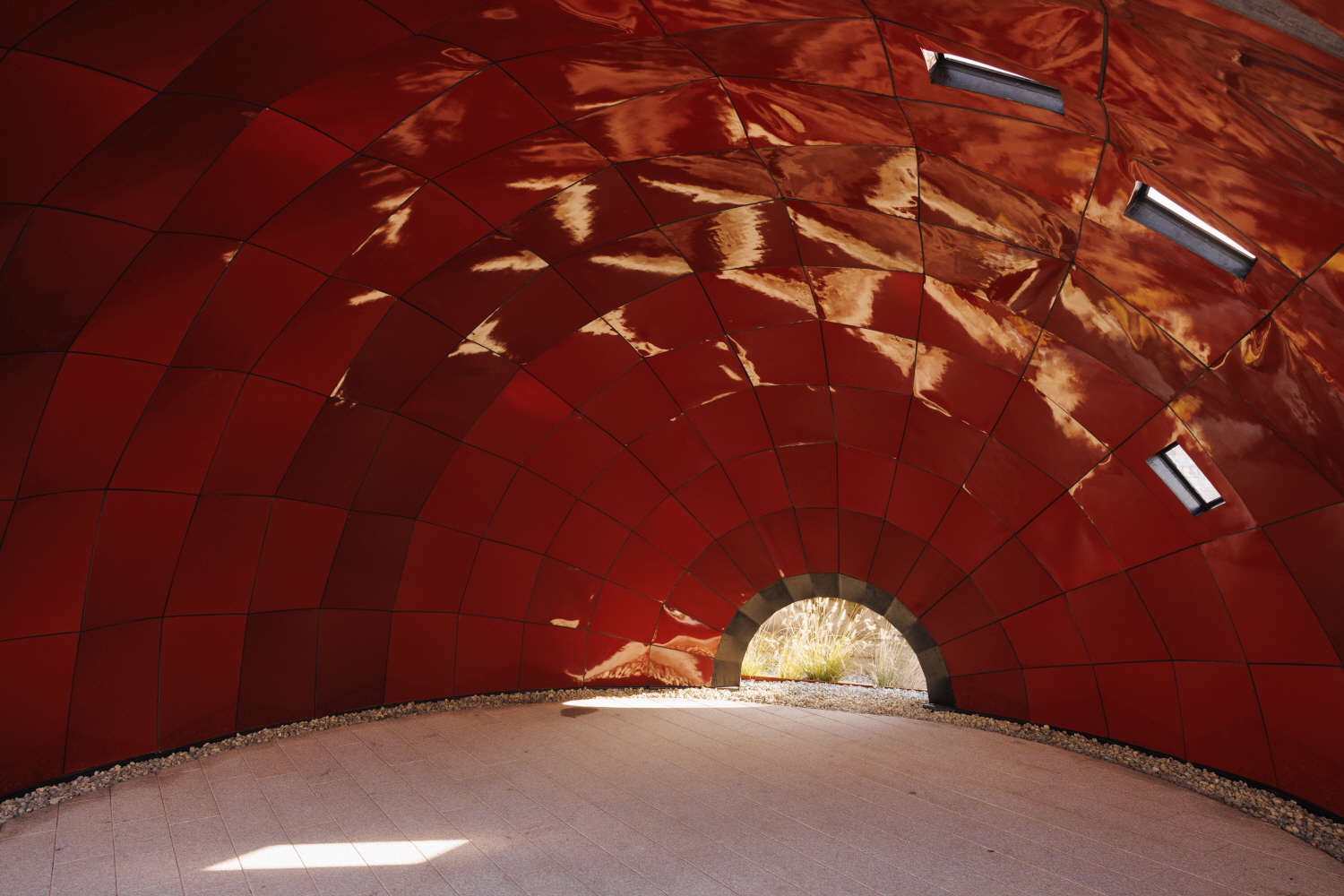SPACE December 2024 (No. 685)


Installation views of Urushi Shell ©Jang Sooin
After two years of research, development, construction, and after the completion of the four follies, the 5th Gwangju Folly officially opened on Oct. 22. Under the direction of general curator Pai Hyungmin (professor, University of Seoul), the Breathing Folly (Cho Namho), Air Folly (BARE), Eco Hanok (Assemble + BC Architects + Atelier LUMA), and Urushi Shell (Ito Toyo) have been installed in Sansu-dong and Dongmyeong-dong areas of Gwangju-si (covered in SPACE Nos. 671, 674, 681). The four follies under the theme of ‘Re:Folly’ are experimental and practical explorations of circular architecture. They each incorporate renewable and environmentally friendly materials and construction methods using natural resources and waste collected from various locations including Gwangju, Wando, Goheung, Damyang, Naju, and Yeosu. Last to be completed among the follies was the Urushi Shell by Ito Toyo (principal, Toyo Ito & Associates) which made its debut at the official opening. Resembling an igloo at first glance, this dome structure uses lacquer extracted from the sap of a lacquer tree as its structural material. The collaborations between Ito Toyo’s team and Toki Genji (professor, Miyagi University), a modern artisan of Japanese lacquer ‘urushi’, and structural engineer Mitsuhiro Kanada (professor, Tokyo University of the Arts) was what helped this project break through its early difficulties. The fabrication method, called geonchil and in Japanese, kanshitsu involves layering of hemp or cotton over clay or wood, followed by multiple coats of lacquer for its shape. Lacquer, used as an adhesive in this process, is not only carbon-neutral in its production and processing but also contributes to the upcycling of forest resources. Known for its exceptional strength, durability, and lightness, geonchil reached its peak 1,300 years ago and was widely used in everyday tools, sculptures, and architecture across Korea, Japan, and China. However, the technique largely disappeared from daily life over time. Toki and Mitsuhiro reinterpreted this traditional method into the concept of ‘structural geonchil’ and ventured new possibilities. They saw possibilities in its similarities to FRP (fabric reinforced plastic), a modern technology of making shapes through hardening synthetic fiber with synthetic resins. By substituting a synthetic resin with natural lacquer, they propose a sustainable alternative that avoids placing an undue burden on future generations. Ito Toyo’s team developed curved panels to materialise lacquer in a shell structure. They made hundreds of mockup models to find the right shape and thickness for the structural function of lacquer and experimented its strength. Each lacquer sheet was meticulously hand-coated by Japanese artisans, while honeycomb structures for integration with these sheets were manufactured in Korea. In a situation in which we are witnessing a yearly decline in the number of skilled artisans and lacquer production, can this material find new life as modern material? Toyo Ito & Associates, Toki Genji and Mitsuhiro Kanada say that, ‘as much as craftsmanship is important in preserving traditional techniques, it is more important to recognise lacquer as an outstanding material and technology of today,’ and suggests that the critical purpose behind this project is to re-recognise the values of lacquer through the convergence of the material with modern technologies. Pai further emphasised that ‘in circumstances where we are now looking for an eco-friendly alternative to plastic, lacquer is at the ultimate peak of bio-plastic.’ However, lacquer is only durable through constant maintenance. For lacquer architecture to last for future generations, attachment and care from local communities is vital. This is why the Urushi Shell is in other words called by the name of ‘architecture of affection’.





